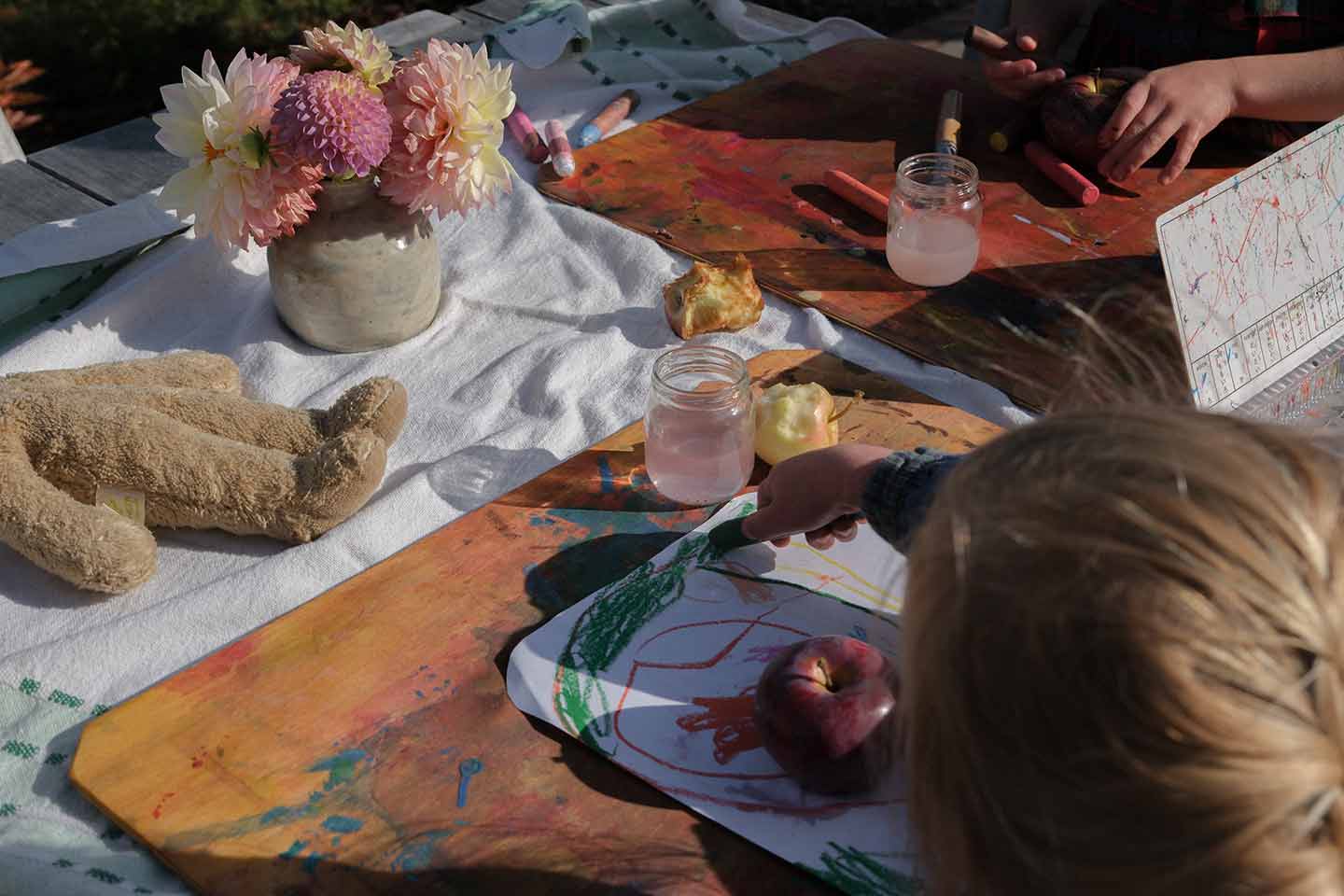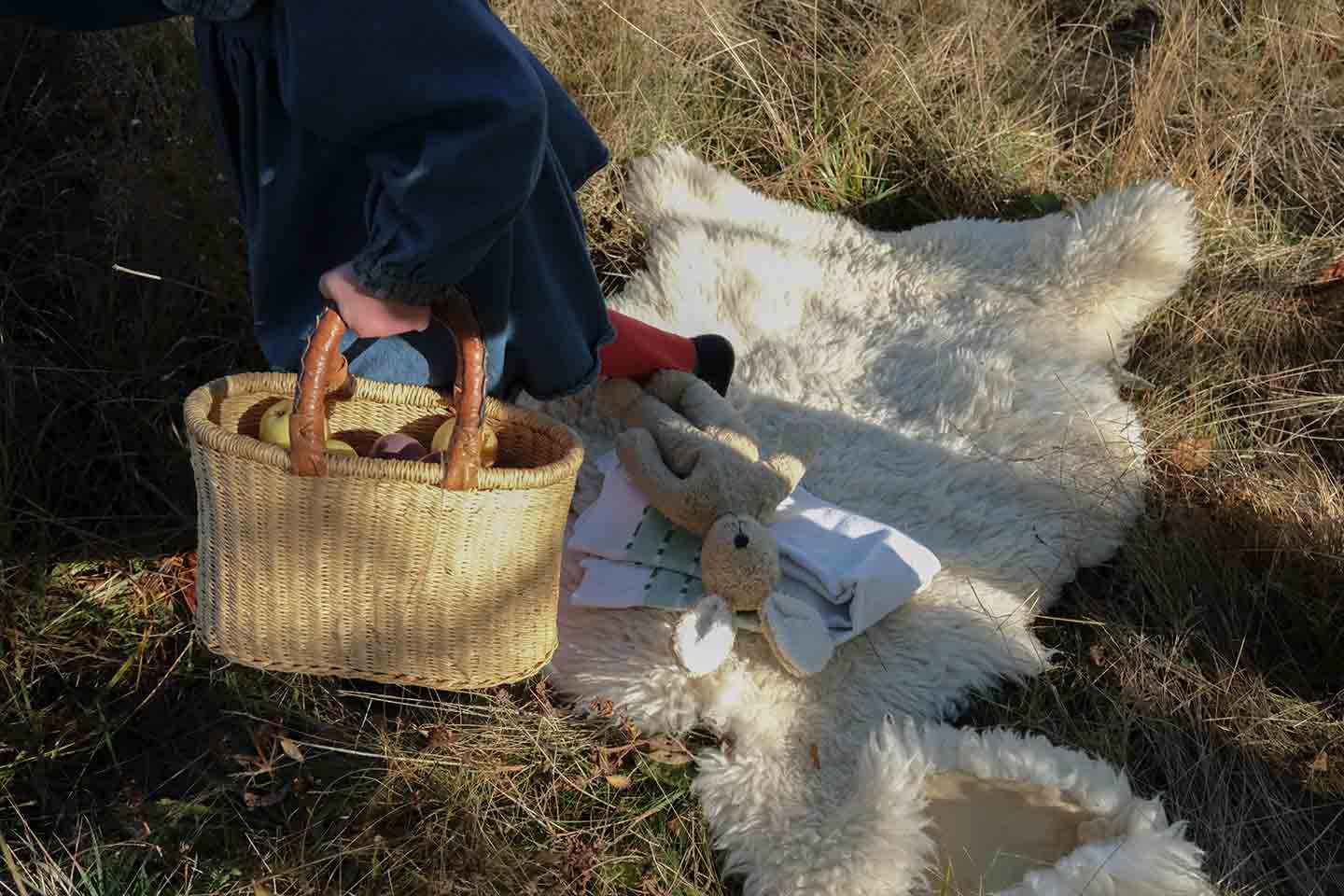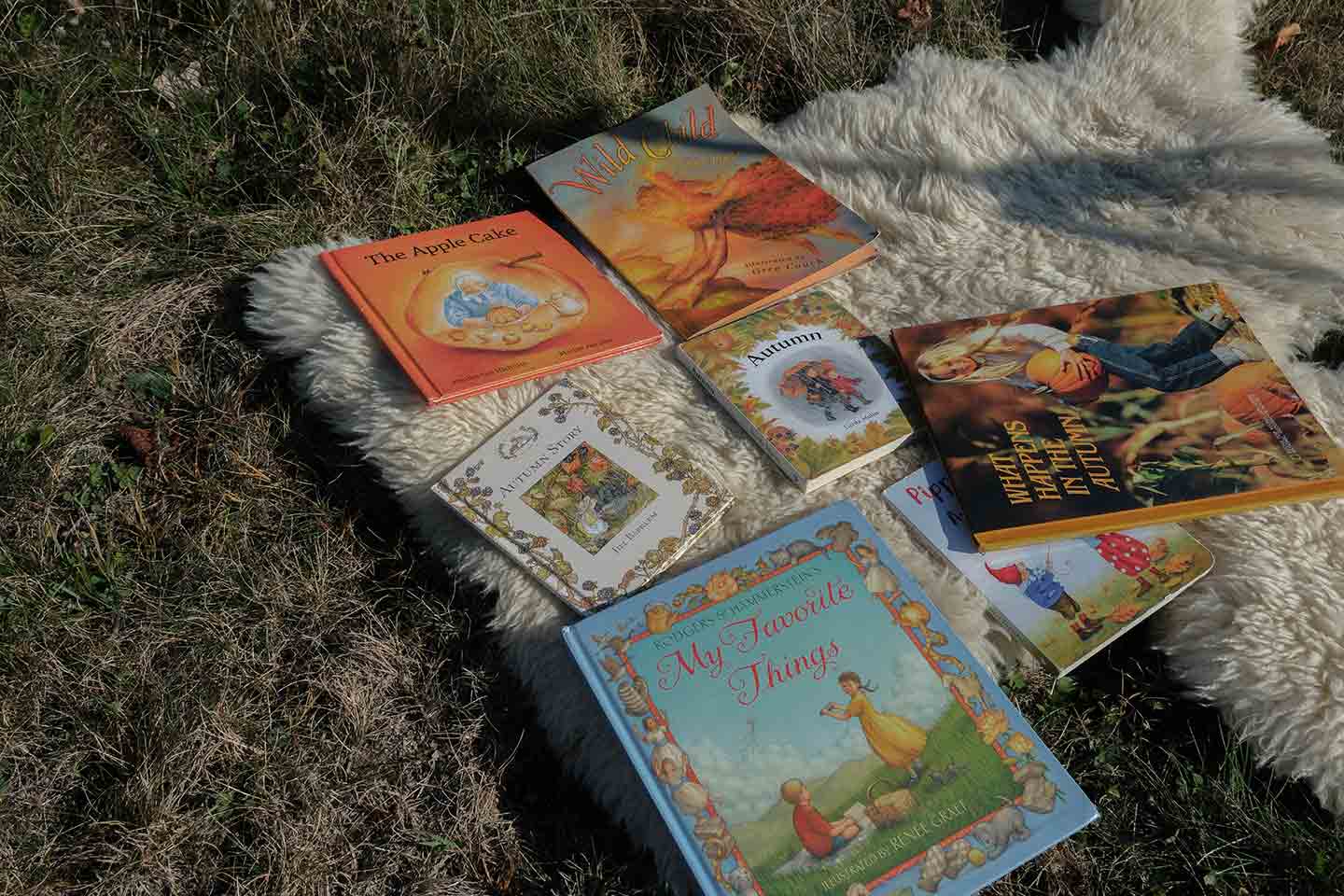





Parenting & Baby
What Is Waldorf Education? Jordan’s Complete Guide to Its Philosophy, Principles, and Practice
We ask Waldorf teacher and REV team member Jordan Fountain to do a deep dive into what is Waldorf education and how can we practice it as both parents and individuals!
Waldorf Education, also known as Steiner Education, is an educational philosophy founded upon Anthroposophical Science, which draws forth the human development ideologies developed by Rudolf Steiner, the philosophy’s founder.
What is Waldorf Education?
In a modern, hurried world, Waldorf Education offers a moment of stillness, time to nurture body and soul. This gentle approach to education is unlike other teaching philosophies. Its magic and beauty, enchanted by the surroundings of nature and storytelling, guide children towards their life’s destiny.. Also known as Steiner Education, this approach was founded over a century ago by Austrian philosopher Rudolf Steiner, and today it inspires thousands of schools and early childhood centers around the world.
The Waldorf curriculum is centered on spiritual science, which teaches reverence for the planet and all living beings. Waldorf schools value natural materials, natural lighting, and outdoor spaces, and much emphasis is given to the teaching environment. The model is designed to educate towards freedom and inspire human beings to be free-thinking, imaginative, conscious beings.
Using human development theories by Steiner, Waldorf pedagogy is a developmentally appropriate and focuses on experiencing academia and learning firsthand. By learning through experience, students develop spiritual capacities that lead them to their paths so they can be of service to the world.
Learn more about Steiner’s approach to child development
.
The Origins of Waldorf Education
In 1919, the parents of the Waldorf-Astoria cigarette factory were seeking a deeper experience for their children. These workers asked Rudolf Steiner to create a school for their children, one that would be rooted in Steiner’s spiritual science ideologies, Anthroposophical Science. This was following WW1, when families were in search of an educational option that offered life-giving nourishment and attention to the child as a spiritual being, and with particular importance placed on the needs of the growing child. Thus, Steiner created the first Waldorf school in Stuttgart, Germany.
Today, there are reported to be 1,200 Waldorf schools and 1,800 kindergartens across over 60 countries, including more than 150 in the United States. In the United States, Waldorf schools are certified by an organization known as AWSNA, the Association of Waldorf Schools of North America, which operates under 8 core principles of Waldorf Education.
Find a Waldorf school near you!
The Core Principles of Waldorf Education:
Young children observe their surroundings unconsciously. Children breathe in the entire character of their environment during the first seven years of life. Young children, in particular, learn to know about the world and the cosmos through the meditation of the teacher and their motive. They observe beauty in gesture, goodness, and we can create moral pictures for them through imitation and storytelling. These moral principles are of great importance within the Waldorf School, and these are core principles within the philosophy which weave together the magic of Waldorf Schools. It is said to teach head, heart, and hands, and this is done within the Waldorf setting with great intention. These are the core principles in the United States for Waldorf schools.
1. The school sees the child as a spiritual being
Waldorf education emphasizes that the child is a human being. What sets animals, minerals, and humans apart, is the human being’s inner spirit. The base of Waldorf Education is Anthroposophical Science, which is a spiritual belief that human beings are soul beings, with an inner spirit that is on a path towards a destiny. This understanding is more than just a “whole-child” approach. This is based on the fourfold human being concept, which was designed by Steiner, and is described as 4 connected, dynamic energies that make us human.
2. The school fosters social renewal and teaches, participates in, community service
Waldorf schools use many methods to create community within the school and the outside community, through seasonal festivals, outings, study of place and stewardship for the land, and through service and volunteerism.
3. Teachers use Anthroposophical ideologies regarding human development and the stages of life
Within the Waldorf Schools, teachers use the human development science provided by Steiner as the indications for curriculum, classroom management, discipline, seasonal celebrations, and consideration of how to educate the child. This would include Steiner’s ideology around the 7-year change, which is when a child develops adult teeth. Steiner suggests that developmentally, this is the appropriate time for a human to learn reading, based on their cognitive awareness and readiness. Thus, in Waldorf Schools, reading is not taught until grade 1, when the child is roughly age 7.
4. There is freedom in what is taught, except for specific curriculum material, such as mythology, which must be included in the teacher’s curriculum
In Waldorf classrooms, there are many expectations around curriculum and material that is taught. Examples of curriculum include: Greek mythology, Norse mythology, Renaissance, Grimm Fairytales, early biblical stories, and Shakespeare. Despite these expectations, teachers are also given much freedom to adapt their own Main Lessons, or main curricula, to be geographically and culturally specific to the children within their own school. This would mean that if the students were primarily Jewish, then Torah would be used rather than the Bible. Waldorf Schools are not religious; however, there is a sense of gratitude and value in exploring the concept of religion and understanding spirituality as human beings. It is understood that worshiping is a human trait, and thus, we must learn to understand the many religions of the world and honor our own heritage and cultures.
5. Human relationships are valued and inspire community growth
It is commonplace for teachers to stay with the same group of students for several years, forming deep, trusting relationships. Often, students will have the same Prek-Kinder teacher, then a Grade 1 teacher, and then the same teacher will stay with them from Grades 2 – 8. This arrangement looks different for different Waldorf schools and is dependent on many factors, including staffing and the size of the school. Ideally, the students would have the same teacher through early childhood and lower grades and the same teacher through upper grades. There are many ways the Waldorf school inspires community growth, including seasonal festivals. Most Waldorf Schools honor the seasons and celebrate Winter Solstice, Candlemas or Imbolc (halfway point of winter), May Day, St. Nicholas Day, Saint Lucia Day, Winter Faire, Easter or Ostara, Rose Ceremony, Grandparents Day, Earth Day, Lantern Walk, Harvest Festival, and Michaelmas. Community word days are also common at Waldorf Schools.
6. All school staff participate in spiritual science development (Anthroposophical studies)
It is vital within the Waldorf school that teachers do inner work, also known as spiritual science. Inner work looks different for every person, but there are indications from Steiner on how to best practice spiritual science. Some examples of inner work include: the sixfold path, rose meditation, daily calendar for the soul, daily rhythmic exercises, eurythmy, book study groups, and there are more ways to integrate Anthroposophical science into everyday life.
Waldorf vs. Traditional Education: Key Differences
Waldorf Education is founded on ancient ideas of spirituality, while traditional education today is founded on modern academic research. This is the most important difference between Waldorf Education and Traditional Education practices. The foundation of spirituality within the Waldorf curriculum is what drives Waldorf teachers to develop a deeper meaning to their work and their understanding of the child. It is important not to confuse the word spirituality with religion. Waldorf Schools are not religious institutions.
Given this understanding of spirituality, one can better understand how Waldorf Education differs from Traditional education further. The goal within the Waldorf school is to teach children to become free-thinking, while traditional education teaches children to partake in societal expectations. Traditional schools are designed to teach human beings to follow, to learn a boxed curriculum and history that has been designed to inspire humans to become working individuals who are contributors to society. Many early foundations within the Traditional schooling initiatives were founded by the Rockefeller Foundation as systemic solutions to cultural and societal dynamics.
Waldorf Education, which is designed to achieve free-thinking, free humans, inspires the child to find their own inner purpose and strive to fulfill what makes them happy. This is not a cookie-cutter path, but rather an individualized education that views them as a human, with a spirit and a purpose.
The arts within the Waldorf Education teach students to make unique, individualized art. This differs from traditional education, which quite literally teaches students to color within the given lines. Outdoor education and play is also an important difference, as Waldorf Education allows students to play in the woods, with sticks, rocks, and ropes, while traditional education allows students to play in a fenced-in play yard with plastic playground equipment. There is also a great importance placed on natural materials, a calming learning environment, screen-free learning, and ample outdoor time within the Waldorf Schools, which is not valued in traditional education methods.
Compared to traditional education, which often relies on standardized testing, early academics, and subject-specific instruction, Waldorf schools take a slower, more unhurried approach to learning. This is due to the indications given by Steiner on human development of the child and academic readiness. Unhurriedness and reverence for the natural world are also, in part, a method to develop freedom and free thinking.
Technology and overly detailed toys and books are intentionally limited throughout all grades, allowing imagination and individual images to be created. Teachers choose to tell stories verbally, rather than show picture books, because it allows the children the opportunity to create their own images in their minds. Much like AI today, if we write based on our own ideas and concepts, we are enforcing our free thinking and creating our own thoughts and images, vs. using AI to depict thoughts and ideas for us.
Waldorf Education Around the World
In the United States, Waldorf schools can be found across all geographic regions. Some operate as independent private schools, while others operate as charter schools. All Waldorf schools that use the Waldorf name, however, are required by law to be accredited by national associations such as AWSNA and ECSWE. It is frowned upon to claim “Waldorf inspired” or “inspired Waldorf” as this is considered to be an insult to the educational philosophy, as this is not a “halfway” method.
In recent years, there has been a shift within Waldorf Education called decolonization, or de-Steiner. This effort is to remove the Anthroposophical foundation from the school, as well as many of Steiner’s indications on human development, in efforts to modernize the Waldorf curriculum. This effort is due to a subconscious dogma around spirituality and spiritual science. Many modern humans do not resonate with the fourfold human being and the ideologies around spirit and soul energy. This is theoretically due to many variables, including the shift of humanity leaning towards mechanization-like tech and AI, but also due to religious conflicts and the fear, atheism, and distaste for organized religion, which has spread through the United States over the last several decades. Given these many variables, there is a large movement within the Waldorf schools to take spirituality out altogether from the curriculum. Thus, the Waldorf school would operate as a more “holistic and whole-child approach” rather than focusing on the human being as a physical, etheric, astral, and ego (four-part) spirit being.
Today, many of the schools in Europe are still operating as Steiner schools, with the foundation of spiritual science, whereas the American schools are shifting towards Waldorf, without the Steiner. To many teachers and educational professionals who understand Waldorf Education at its core, this is a tragedy for the philosophy and will change the Waldorf approach entirely. As modern human beings, rooted in mechanical, tech-driven ideas and AI, we are closed to accept the ideas and concepts around spirituality and astral shifts, which cannot be seen. Just like within Westernized medicine, which works with only the physical body, because that is all that can be seen, Waldorf education, without the spiritual foundation, would do the same, by teaching the child as a physical being, without a soul.
In Chinese medicine, however, doctors work with the Chai, the energy coming from the life body, also called the Astral body. There is much wisdom to be shared from ancient medicines and ideas around the spirit body. The decolonization of Waldorf schools will lead to the teaching of solely the physical body, rather than the fourfold human being, which, in my opinion, will be the end of Waldorf Education entirely.
Critical Thinking and De-Steiner Waldorf Education Discussion ~ Podcast
Common Questions and Misconceptions About Waldorf Education:
“Is Waldorf Education Religious?”
While rooted in Rudolf Steiner’s spiritual philosophy known as Anthroposophy, modern Waldorf schools are nonsectarian and non-denominational. Though Waldorf Schools are not religious, they do not cater to ideas of atheism. The word god, or goddess, is often used within the school as a general word for all energy. There are many aspects of spirituality within the school, including verse, song, traditional curriculum content, including mythology and religious texts, seasonal celebrations rooted in both pagan and Christian beliefs, discussion, and stories regarding angels and etheric beings.
“Why Does Waldorf Delay Reading?”
Waldorf Schools design the curriculum based on the human development ideologies of Steiner. Steiner’s research in human development suggested that children are cognitively ready for reading at the age of seven, which is after the loss of their baby teeth. It is also suggested that children should be first introduced to ample oral language opportunities, storytelling, and expanding their imagination, before learning to read. In my experience, this allows children an unhurried approach to academics and creates enthusiasm and eagerness around reading. There is also an important role for readers to learn knitting, and other games and activities which cross the midline, which enforce connections and cognitive development while reading.
Just because reading is not being prioritized in Kindergarten at Waldorf Schools, does not mean that at home parents should not be reading to their children or telling stories. If a child is curious about reading or learning letter sounds before grade 1, it is not negative to teach these academics early at home. However, there should be no excessive pressure, testing, or expectations around reading until age 7.
“Is Waldorf Anti-Technology?”
Waldorf is not anti-tech, but it is generally screen-free until children reach upper grades. Waldorf education emphasizes human interaction, real-life experiences, written text, and nature-based learning, especially in the early years. Technology is introduced gradually, once students can engage with it consciously and critically.
Is Waldorf Education Right for Your Child?
Choosing an educational philosophy is a deeply personal decision. Waldorf Education appeals to families seeking a spiritual, rhythmic, imaginative approach to learning that is rooted in the seasonal circle of the year. It’s especially meaningful for parents who value soul, reverence, mythology, storytelling, and the arts.
Visiting a Waldorf school can be a magical experience. It is important to remember that each school is different and that no two schools will be alike. It is the teachers who make a school a wonderful place. If the teachers within the Waldorf school are doing inner work, this will show within the school, and it will truly be a special place.
Final Thoughts:
In a world driven by tech and AI, a world of business and bustling cities, of lights and cell phone chargers, look to Waldorf Education as an opportunity for children to slow down and experience the gifts of life. Through this experience, children’s souls are literally nourished through intentional learning and life experiences. Waldorf education is a spiritual path, one in which a child is not necessarily conscious. Honoring autumn with the light of a lantern, observing the dew drops on a spring flower, and gesturing with strength and song in unity with classmates in theatrical delights portraying the mythical Greek beings, are all ways that students live within the school and develop their inner light.
Learn more about Jordan’s journey into Waldorf education here!
Also explore Waldorf inspired activities for kids like coloring, baking with apples and reading books!

























